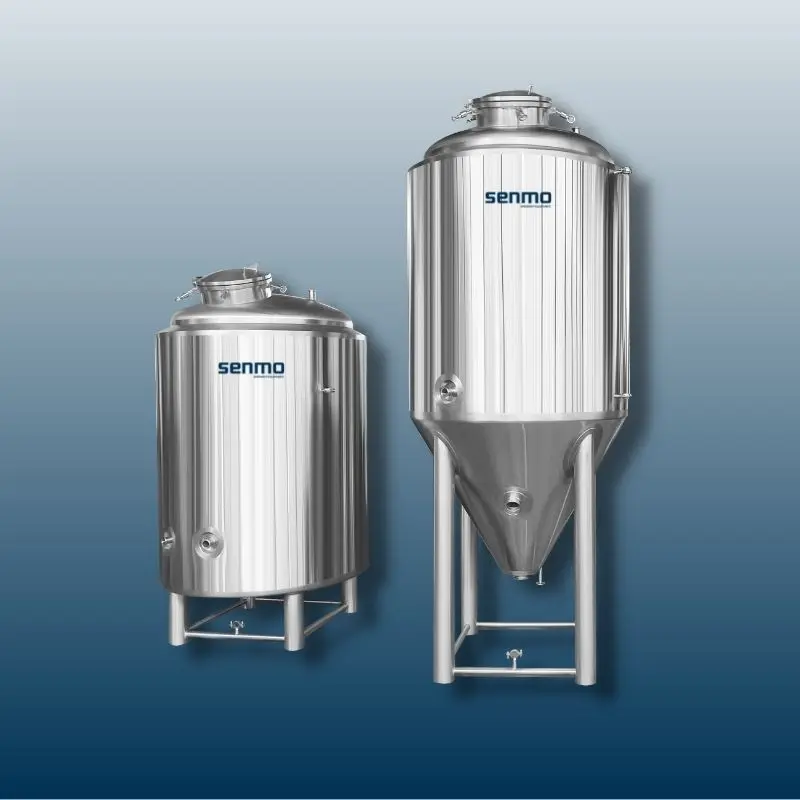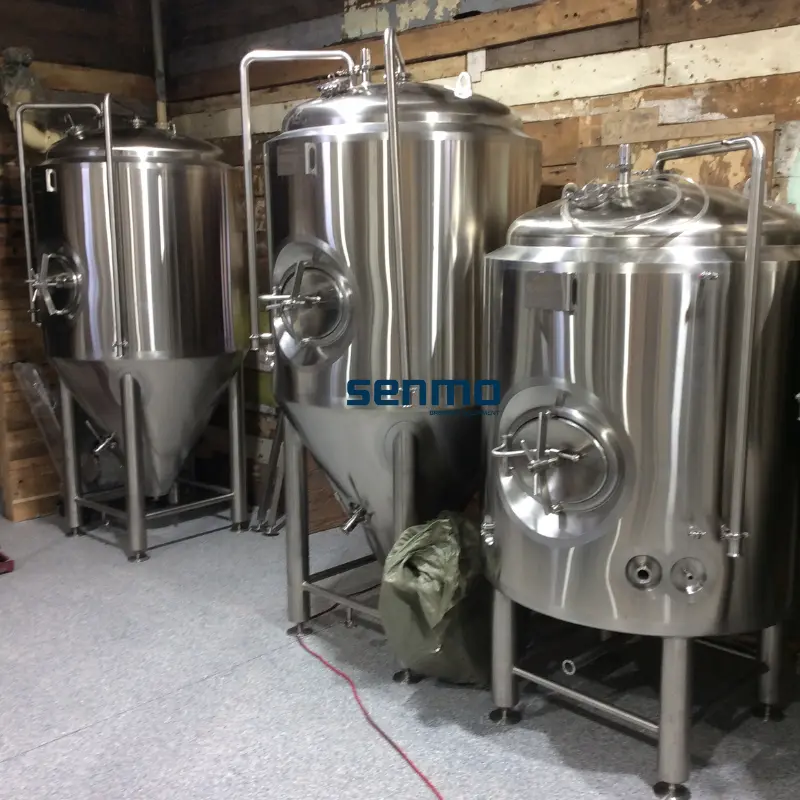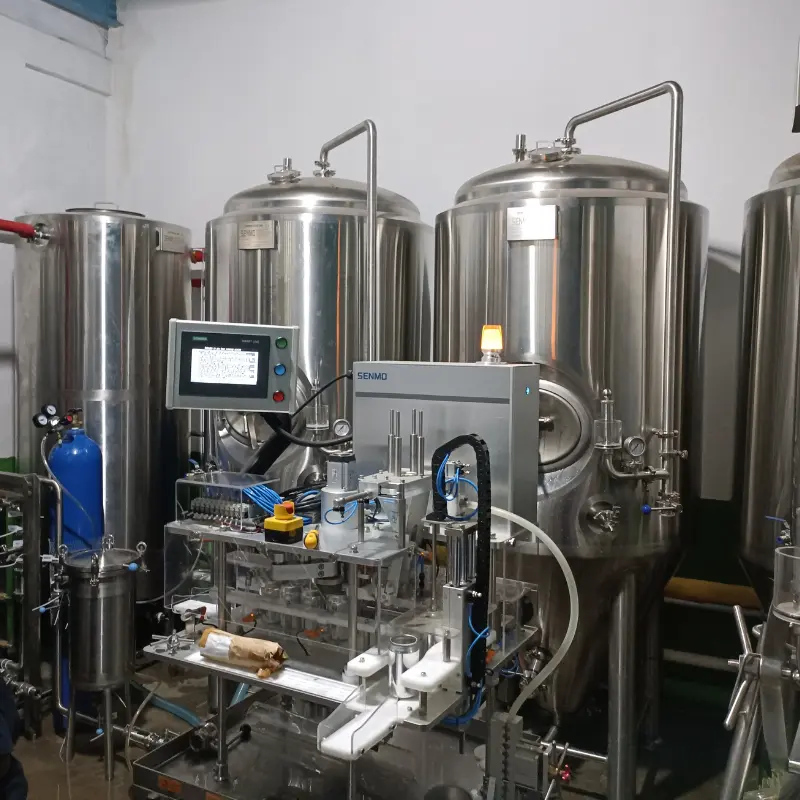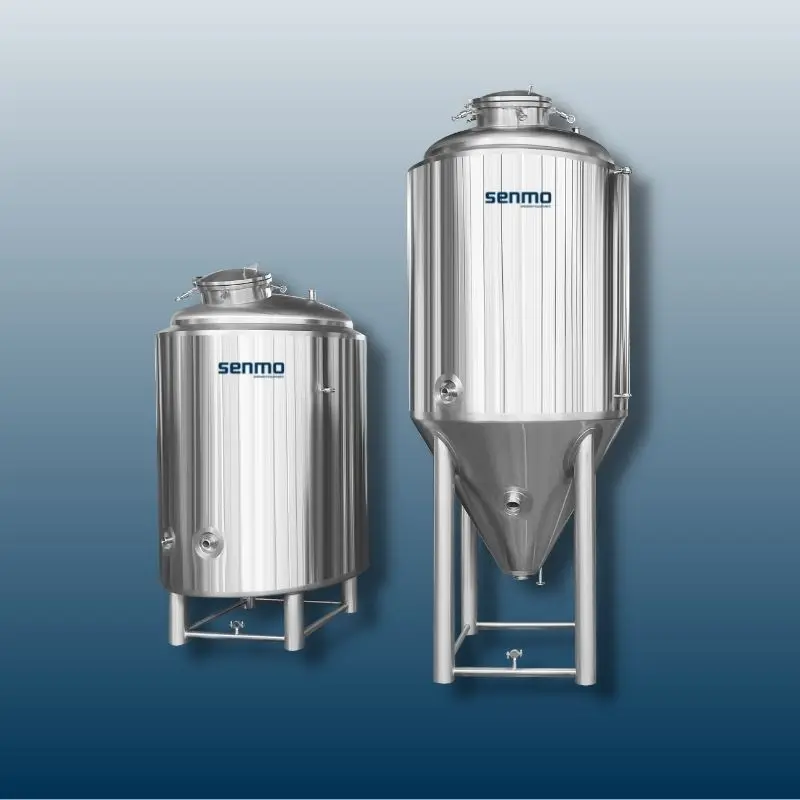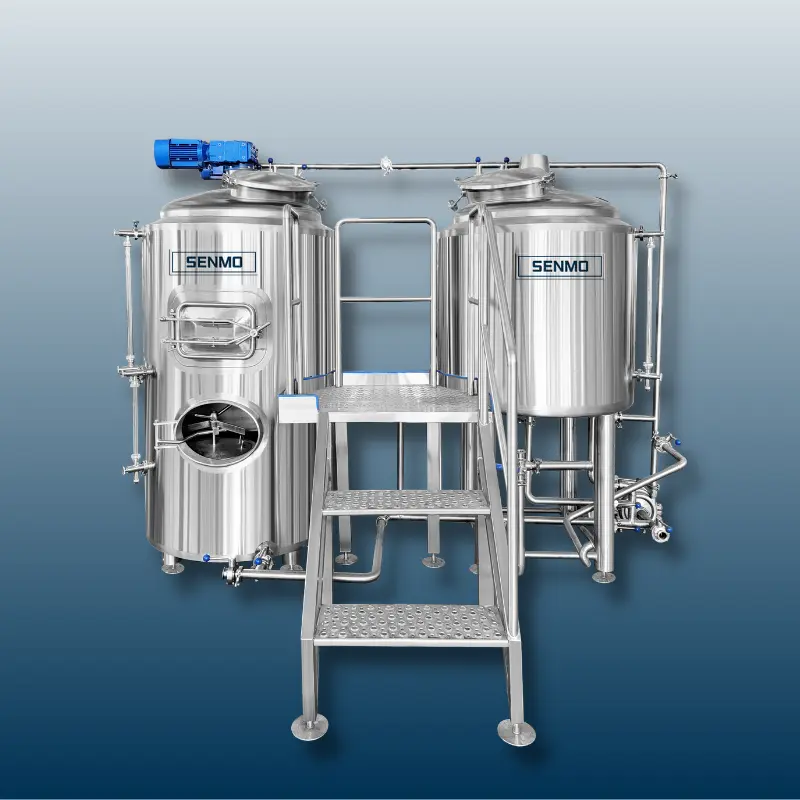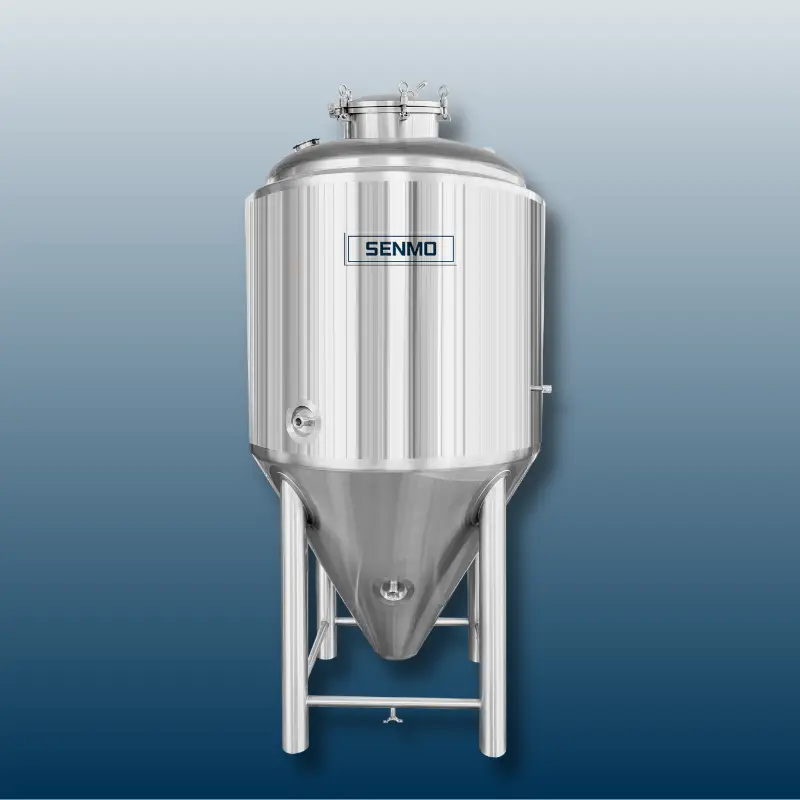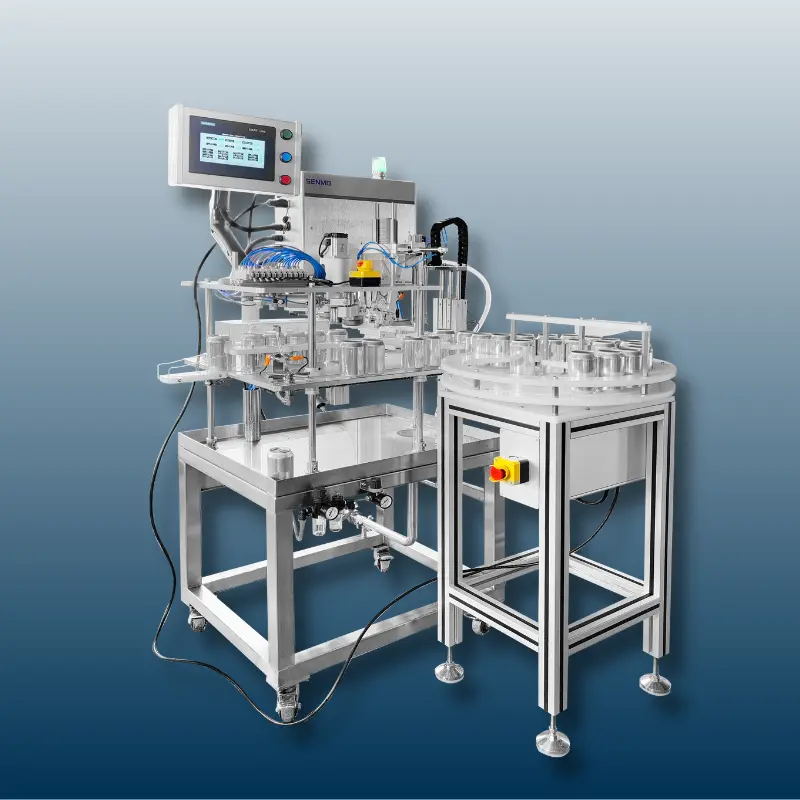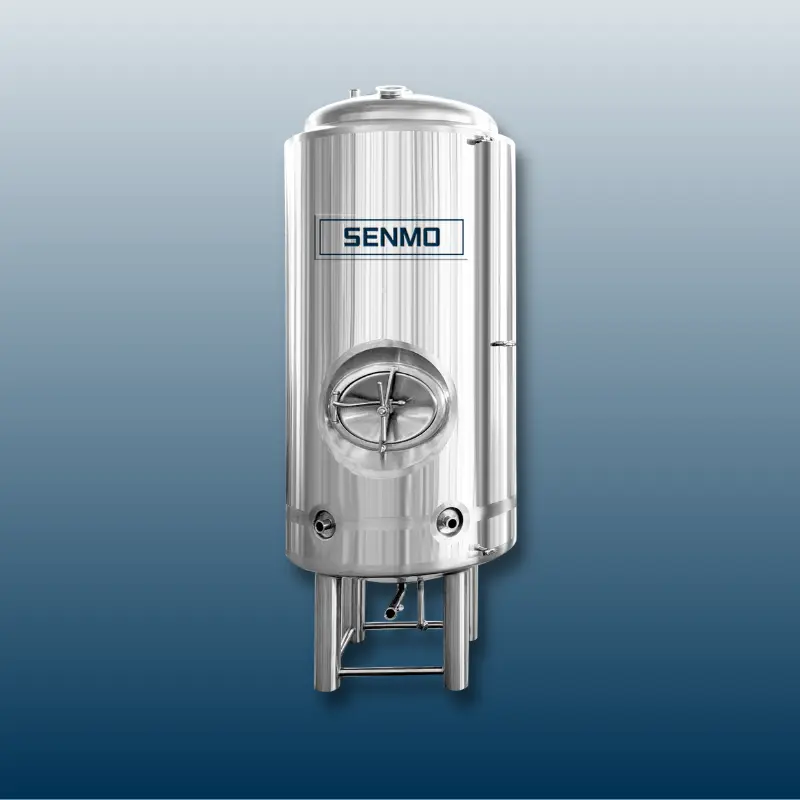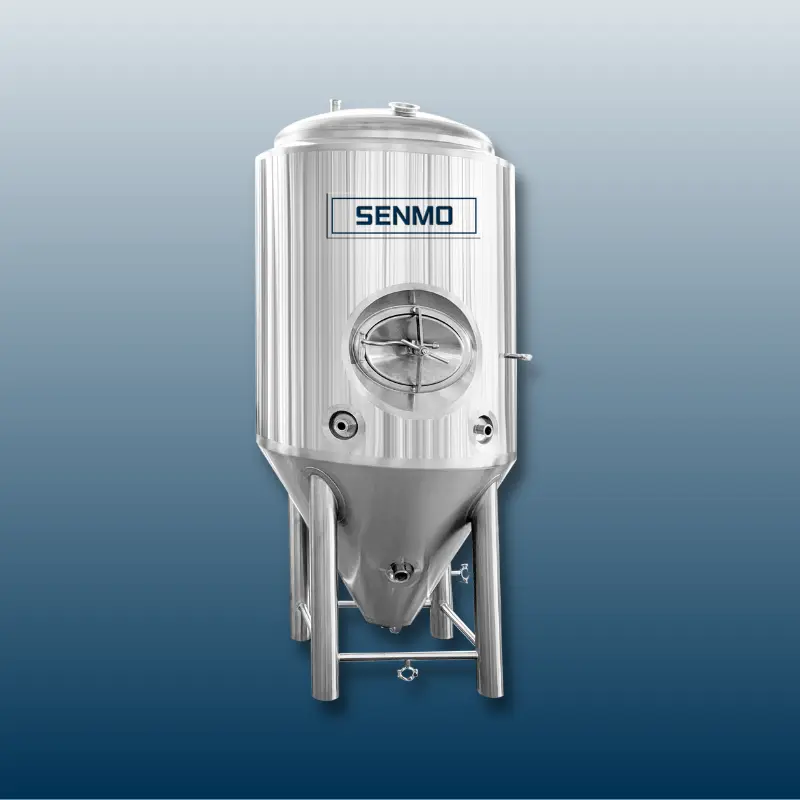A brite tank, also known as a bright beer tank, is a key component in the beer brewing process, particularly in the context of commercial breweries. It serves as the vessel where beer undergoes final conditioning, carbonation, and clarification before packaging and serving to consumers.

Here are some key features and functions of a brite tank:
Clarification: After fermentation, beer may contain residual yeast, proteins, and other solids that can affect its clarity and stability. The brite tank allows beer to undergo a period of conditioning and settling, allowing these solids to settle out, resulting in a clearer and more visually appealing final product.
Carbonation: During conditioning in the brite tank, brewers often introduce additional carbon dioxide (CO2) to the beer to achieve the desired level of carbonation. This process can be achieved through natural carbonation from residual yeast fermentation or by forced carbonation using CO2 gas.
Temperature Control: Maintaining precise temperature control is crucial during the conditioning phase to ensure optimal flavor development and stability. Brite tanks are equipped with cooling jackets or glycol cooling systems to regulate the temperature of the beer as needed.
Pressure Regulation: Brite tanks are designed to withstand pressure, allowing brewers to carbonate the beer to the desired level. Pressure relief valves and pressure gauges are commonly integrated into brite tanks to ensure safe operation and precise control over carbonation levels.
Packaging: Once the beer has undergone conditioning and carbonation in the brite tank, it is typically ready for packaging into kegs, bottles, or cans. Some breweries may also serve beer directly from the brite tank in taprooms or brewpubs, especially for limited-release or specialty brews.
A brite tank plays a critical role in the final stages of the beer brewing process, providing brewers with a controlled environment for conditioning, carbonation, and clarification before the beer is packaged and enjoyed by consumers.
What is the main use of brite tanks in beer brewing?
In beer brewing, the main purpose of a brite tank is for the final processing and storage of beer. The following are the main functions of a brite tank in beer brewing:
Final Clarification: After the fermentation process is complete, some yeast, proteins, and other solid matter may remain in the beer. The brite tank provides a resting environment that allows these impurities to settle to the bottom, making the beer clearer and more transparent.
Carbonation: In a brite tank, carbonation can be increased by injecting carbon dioxide (CO2) into the beer. This can be achieved by CO2 produced naturally by fermentation or by external injection of CO2 gas.
Storage: A brite tank provides a container for storing beer in optimal condition while it awaits bottling or drinking. At this stage, the beer can continue to be tweaked and improved to ensure its taste and quality are at their best.
Maintain temperature and pressure (Temperature and Pressure Control): The brite tank is equipped with a cooling jacket or glycol cooling system to ensure that the temperature of the beer is controlled. In addition, the brite tank is able to withstand a certain amount of pressure, ensuring that the beer maintains proper carbonation levels during storage.
Preparation for Packaging: After the beer has been processed by the brite tank, it has usually reached a state suitable for bottling or kegging. At this stage, the beer can be put into bottles, barrels or cans, ready for sale to consumers.
In general, the main role of a brite tank in beer brewing is to perform the final processing and storage of beer, including clarification, carbonation, storage, and preparation for bottling.
What are the benefits of using a brite tank in beer brewing?
Using a brite tank in your beer brewing process brings many benefits, here are some of the main ones:
Clarification and Stability: The brite tank provides a still environment, allowing impurities and suspended solids in the beer to settle to the bottom, making the beer clearer and more stable. This helps improve the appearance and taste of the beer, making it more attractive and quality.
Carbonation Control: In a brite tank, the carbonation level of your beer can be precisely controlled. This is achieved by injecting the right amount of carbon dioxide (CO2) into the beer to ensure it has the right fizz and mouthfeel.
Storage and Maturation: A brite tank provides a container for storing beer in optimal condition awaiting bottling or direct consumption. During this stage, the beer can continue to ferment and mature, improving its mouthfeel and flavor characteristics.
Tweaks and Improvements: Further tweaks and improvements can be made to the beer using a brite tank. For example, additional hops can be added at this stage or the beer's acidity can be adjusted to meet specific taste preferences or market demands.
Ready for bottling: When beer has been through the brite tank process, it has reached a state suitable for bottling or kegging. This simplifies the subsequent bottling process and ensures consistent quality and taste of the bottled beer.
To sum up, brite tanks play a vital role in the beer brewing process, helping brewers to produce high-quality beer and ensure its success in the market by providing functions such as clarification, carbonation, storage and bottling. popular.
The brite tank plays a critical role in the beer brewing process, serving as the final stop before beer reaches the consumer. Through its functions of clarification, carbonation control, conditioning, and preparation for packaging, the brite tank ensures that each batch of beer is of the highest quality, with clarity, flavor, and stability carefully optimized to delight beer enthusiasts around the world. Cheers to the brite tank – an indispensable tool in the craft of brewing .
